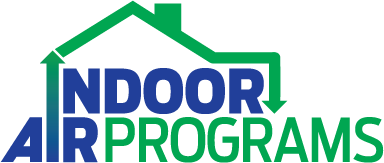Sick Building Syndrome is a commonly used term when someone complains that a building that they are in is causing them to be ill. The technical term for this is non-specific building related illness or NSBRI.
Another term, SBRI, or specific building related illness used when symptoms of diagnosable illness are identified and can be attributed directly to building contaminants and exposures.
NSBRI is used to describe situations in which building occupants experience acute health and comfort effects that appear to be linked to time spent in a building, but no specific illness or cause can be identified. The complaints may be localized in a particular room or zone, or may be widespread throughout the building.
Causes of NSBRI can include inadequate ventilation, chemical contaminants from both indoor and outdoor sources, and/or biological contaminants.
These issues can be in a home, school, office or any building. In order to determine a solution, a building investigation is conducted.
Building Investigation Procedures The goal of a building investigation is to identify and solve indoor air quality complaints in a way that prevents them from recurring and which avoids the creation of other problems. To achieve this goal, it is necessary for the investigator(s) to discover whether a complaint is actually related to indoor air quality, identify the cause of the complaint, and determine the most appropriate corrective actions.
The investigation procedure is best characterized as a cycle of information gathering, hypothesis formation, and hypothesis testing. It generally begins with a walkthrough inspection of the problem area to provide information about the four basic factors that influence indoor air quality- the occupants, the HVAC system, possible pollutant pathways, and possible contaminant sources.

Preparation for a walkthrough should include documenting easily obtainable information about the history of the building and of the complaints; identifying known HVAC zones and complaint areas; notifying occupants of the upcoming investigation; and, identifying key individuals needed for information and access. The walkthrough itself entails visual inspection of critical building areas and consultation with occupants and staff.
The walkthrough should allow the investigator to develop some possible explanations for the complaint. At this point, the investigator may have sufficient information to formulate a hypothesis, test the hypothesis, and see if the problem is solved. If it is, steps should be taken to ensure that it does not reoccur. However, if insufficient information is obtained from the walk through to construct a hypothesis, or if initial tests fail to reveal the problem, the investigator should move on to collect additional information to allow formulation of additional hypotheses. The process of formulating hypotheses, testing them, and evaluating them continues until the problem is solved.
Testing or air sampling for contaminants might seem to be the logical response to occupant complaints, it seldom provides information about possible causes. While certain basic measurements, e.g., temperature, relative humidity, CO₂, and air movement, can provide a useful “snapshot” of current building conditions, sampling for specific pollutant concentrations is often not required to solve the problem and can even be misleading. Contaminant concentration levels rarely exceed existing standards and guidelines even when occupants continue to report health complaints. Air sampling should not be undertaken until considerable information on the factors listed above has been collected, and any sampling strategy should be based on a comprehensive understanding of how the building operates and the nature of the complaints.
Solutions
Pollutant source removal or modification is an effective approach to resolving an IAQ problem when sources are known and control is feasible. Examples include routine maintenance of HVAC systems, e.g., periodic cleaning or replacement of filters; replacement of water-stained ceiling tile and carpeting; venting contaminant source emissions to the outdoors; storage and use of paints, adhesives, solvents, and pesticides in well ventilated areas, and use of these pollutant sources during periods of non-occupancy; and allowing time for building materials in new or remodeled areas to off-gas pollutants before occupancy. Several of these options may be exercised at one time.
Increasing ventilation rates and air distribution often can be a cost-effective means of reducing indoor pollutant levels. HVAC systems should be designed, at a minimum, to meet ventilation standards in local building codes; however, many systems are not operated or maintained to ensure that these design ventilation rates are provided. In many buildings, IAQ can be improved by operating the HVAC system to at least its design standard, and to current ASHRAE Standard. When there are strong pollutant sources, local exhaust ventilation may be appropriate to exhaust contaminated air directly from the building. Local exhaust ventilation is particularly recommended to remove pollutants that accumulate in specific areas such as rest rooms, copy rooms, and printing facilities.
Air cleaning can be a useful adjunct to source control and ventilation but has certain limitations.
Education and communication are important elements in both remedial and preventive indoor air quality management programs. When building occupants, management, and maintenance personnel fully communicate and understand the causes and consequences of IAQ problems, they can work more effectively together to prevent problems from occurring.
OSHA and General Duty Clause
- Under the OSH law, employers have a responsibility to provide a safe workplace.
- A short summary of key employer responsibilities: can be found at: https://www.osha.gov/as/opa/worker/employer-responsibility.html
- The General Duty clause states, “Employers must provide a workplace free from serious recognized hazards and comply with standards, rules and regulations issued under the OSH Act.”
- Employee complaints of illness should be taken seriously to comply with the general duty clause.
- Approaching a situation with the goal to assure workplace safety is key to a successful outcome.
